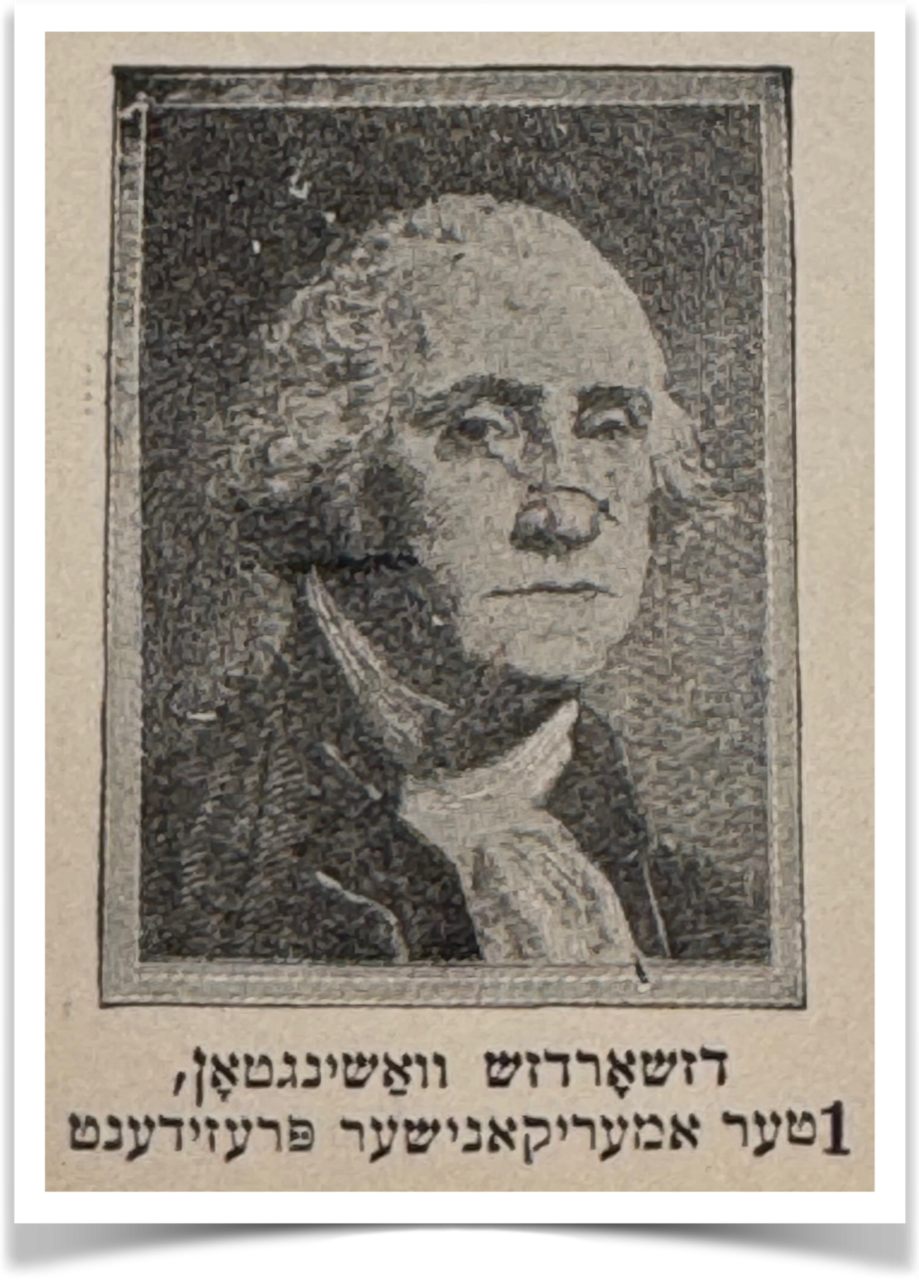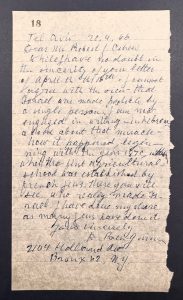The 60th inauguration ceremony for the president of the United States will take place on Jan. 20. Under the 20th Amendment to the U.S. Constitution, ratified in 1933, the inauguration takes place on that date—unless Jan. 20 is a Sunday, in which case the public inauguration takes place the next day, following a private swearing-in ceremony.
The inauguration of George Washington as the first president of the United States took place in New York City in 1789.
This drawing of Washington with his name in Yiddish (note ‘George’ in Yiddish is eight letters) and his title as the first “Amerikanisher President” is from a fold-out New Year’s booklet published in the late 1890s in New York by Katzenelenbogen Music Publishers. Judah Katzenelenbogen was a co-founder of the American Hebrew Publishing Company and a publisher of sheet music for Yiddish songs.
In 1790, Washington wrote a letter to the Touro Synagogue in Newport, Rhode Island, and stated that life in the new nation would be different. People would be free to practice their religion and not simply be tolerated, and the government would not interfere with individuals’ beliefs.
“For happily the Government of the United States, which gives to bigotry no sanction, to persecution no assistance, requires only that they who live under its protection should demean themselves as good citizens, in giving it on all occasions their effectual support,” Washington wrote.
“May the Children of the Stock of Abraham, who dwell in this land, continue to merit and enjoy the good will of the other Inhabitants: while everyone shall sit in safety under his own vine and fig tree, and there shall be none to make him afraid.”
The reference that “none shall be afraid while sitting under their vine and fig tree,” is from Micah 4:4 and was used by Washington in his writings almost 50 times.
As a new American presidency begins, let us hope that Washington’s wish for Jewish Americans is fulfilled not just for them but for all, regardless of where they may be sitting.







